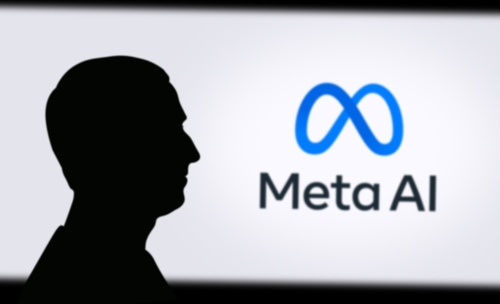Cable One (CABO) Q2 Revenue Falls 3.4%

Key Points
Cable One reported a GAAP net loss of $438.0 million in Q2 2025, including non-cash asset impairment charges of $456.2 million, net of tax.
GAAP revenue was $381.1 million in Q2 2025, down 3.4% year over year and just below expectations.
Subscriber numbers continued to fall, with total customers down 3.2% and broad-based declines across key service lines.
Cable One (NYSE:CABO), a broadband and communications provider focused on non-metropolitan markets, released its second quarter results on July 31, 2025. The headline news was a sharp GAAP net loss of $438.0 million, largely driven by a $586.0 million non-cash asset impairment in the period. GAAP revenue totaled $381.1 million, just under the $381.5 million analyst estimate and representing a 3.4% decrease from the prior year. Key profit metrics also weakened, with Adjusted EBITDA (non-GAAP) dropping 4.3% year over year. The quarter reflected persistent declines in subscriber counts, with legacy segments continuing to face challenges.
| Metric | Q2 2025 | Q2 2025 Estimate | Q2 2024 | Y/Y Change |
|---|---|---|---|---|
| EPS (GAAP) | ($77.70) | $6.22 | $6.58 | NM |
| Revenue | $381.1 million | $381.5 million | $394.5 million | (3.4%) |
| Adjusted EBITDA | $203.2 million | $212.4 million | (4.3%) | |
| Adjusted EBITDA margin | 53.3% | 53.8% | N/A | |
| Net cash from operating activities | $144.9 million | $155.5 million | (6.8%) |
Source: Analyst estimates for the quarter provided by FactSet.
Company overview and business model
Cable One (NYSE:CABO) operates mainly in secondary and tertiary markets, providing broadband internet and communications services where major competitors are less present. Its core revenue comes from high-speed data products targeted at residential and business customers outside dense urban centers.
In recent years, the company has shifted its strategy from traditional cable television to focus on high-margin broadband and business data solutions. These efforts are supported by ongoing investment in network infrastructure, with expansion into fiber deployments and advanced broadband technology to maintain stronger speeds and reliability. Key success factors include growing data market share, keeping its network competitive, and managing costs as legacy video revenues decline.
Quarter highlights and business performance
GAAP revenue dropped to $381.1 million, modestly below analyst projections and down 3.4% from the prior year. The company’s GAAP revenue base remained under pressure as subscriber counts continued to decline. Net profit (GAAP) turned negative, with a net loss of $438.0 million compared to net income of $38.2 million in Q2 2024—a reversal driven almost entirely by non-cash asset impairment charges totaling $456.2 million, net of tax.
Adjusted EBITDA, a widely used non-GAAP profitability metric that deducts one-time or non-cash charges, was $203.2 million. This figure fell 4.3% year over year, and although the Adjusted EBITDA margin held relatively steady at 53.3%. Cash generation from operations (GAAP net cash provided by operating activities) fell 6.8% year over year.
Taking a closer look at operating segments, residential data revenue—the company’s main product line—was $229.3 million, down 0.5% year over year (GAAP). However, residential data subscribers declined by 3.2%. While average revenue per user (ARPU) increased by 2.4% to $81.23. Business data revenues inched up 1.2% year over year, but primary service unit (PSU) counts for both residential and business customers were essentially flat or down.
The legacy cable television and voice service business saw the sharpest drops. Residential video revenue sank 15.8% year over year, while video subscribers fell by 19.0% year over year. Voice revenues (GAAP) also declined by 17.9%. These results reflect Cable One's continued retreat from video, a product line that is becoming less relevant as consumers shift to streaming and as programming costs rise. Management noted that video is in its "final phases" and that rate increases have partly offset volume losses in the short term.
Looking at customers, total customer counts fell 3.2% to 1,060,500 as of June 30, 2025, with most of the decline coming from residential. The business customer base grew a modest 1.8% year over year. Data penetration—a measure of how many passings (potential service locations) have broadband service—slipped further to 35.9% as of June 30, 2025, from 37.8% as of June 30, 2024, and nearly all face competitors offering fixed wireless access internet, putting added stress on retention and growth.
On the expense side, the company managed to hold Adjusted EBITDA margins close to past levels, with Adjusted EBITDA margin at 53.3% compared to 53.8% for Q2 2024, but reported a 1.4% increase in selling, general, and administrative (SG&A) costs. Operating cash flow (GAAP) fell, and capital expenditures were cut by about 4.5%.
Product lines and innovation in focus
Innovative products received management’s focus, especially broadband bundles and flexible data packages. FlexConnect, which targets value-driven customers seeking affordable internet by competing directly with cellphone-based internet, launched from pilot trials with positive early results, including higher revenue per user for certain speed tiers, as discussed by management in Q1 2025.
Other recent launches include SecurePlus (a premium service with additional home network security and management features) and Ultimate WiFi (bundled Wi-Fi hardware and support), both seeing adoption among new customers. For example, 17% of new subscribers opted for the Ultimate WiFi add-on in Q1 2025. CEO Julie Laulis said, “We believe our drive toward simplified pricing, segmented marketing campaigns and value-enhancing product and service offerings is laying the groundwork for stronger customer response and improved operating performance over time.” Management emphasizes that while new products show promise, these moves have not yet produced a return to company-wide annual revenue or subscriber growth.
The company continues to invest in targeted marketing campaigns, use data analytics for customer retention (including an in-house artificial intelligence churn prediction tool), and optimize new network buildouts for better customer conversion. However, these initiatives have not yet offset the ongoing decline in legacy services and persistent subscriber losses.
Forward outlook and dividend policy
No quantitative forward guidance was provided by management in the latest release, but management declined to give any forecasts for revenue, profitability, or customer figures for future quarters.
The company previously suspended its dividend, reallocating capital toward debt reduction and investment in organic growth initiatives. For now, this move indicates an emphasis on preserving liquidity and paying down debt amid declining earnings. CABO does not currently pay a dividend.
Revenue and net income presented using U.S. generally accepted accounting principles (GAAP) unless otherwise noted.
Where to invest $1,000 right now
When our analyst team has a stock tip, it can pay to listen. After all, Stock Advisor’s total average return is 1,036%* — a market-crushing outperformance compared to 181% for the S&P 500.
They just revealed what they believe are the 10 best stocks for investors to buy right now, available when you join Stock Advisor.
*Stock Advisor returns as of July 29, 2025
JesterAI is a Foolish AI, based on a variety of Large Language Models (LLMs) and proprietary Motley Fool systems. All articles published by JesterAI are reviewed by our editorial team, and The Motley Fool takes ultimate responsibility for the content of this article. JesterAI cannot own stocks and so it has no positions in any stocks mentioned. The Motley Fool has no position in any of the stocks mentioned. The Motley Fool has a disclosure policy.




.jpg)
